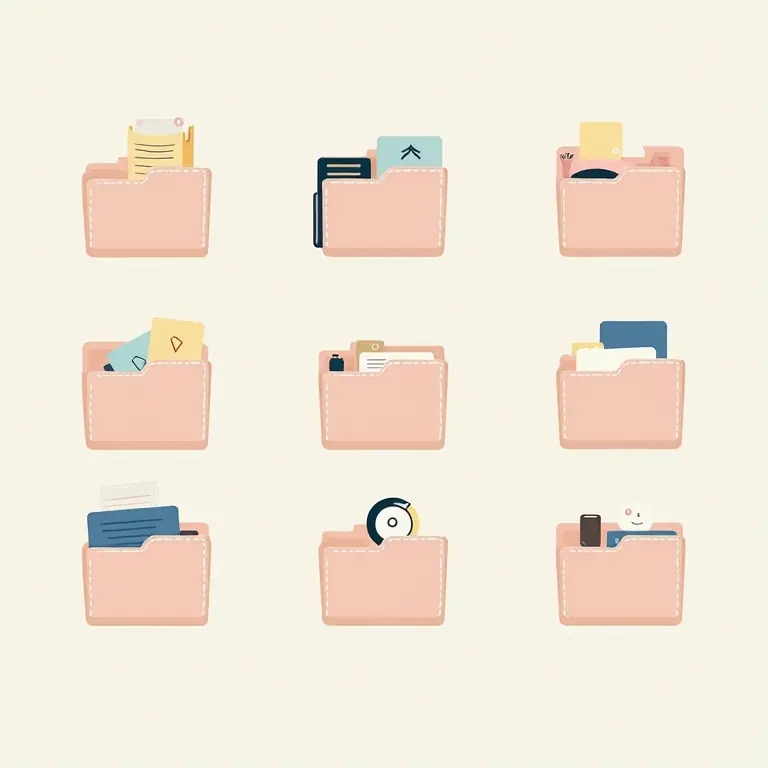Decode Your Declutter: A Friendly Guide to the KonMari Method for Digital Files
In a world increasingly lived online, our digital spaces can quickly become as cluttered – and overwhelming – as our physical homes. We accumulate countless files, photos, emails, and applications, often without a second thought. This digital detritus doesn’t just take up storage space; it drains our mental energy, hinders productivity, and can even contribute to feelings of anxiety. But what if I told you there’s a method, born from a desire for a more joyful and intentional life, that can be applied to the intangible world of digital files? Enter the KonMari Method, made famous by Marie Kondo. While initially designed for physical possessions, its principles translate remarkably well to digital decluttering. This guide will walk you through adapting the KonMari Method to conquer your digital clutter and create a streamlined, peaceful digital existence.
Understanding the KonMari Method: More Than Just Tidying
Before diving into the ‘how-to’ of digital decluttering, it’s crucial to understand the *why* behind the KonMari Method. It’s not simply about getting rid of things; it’s about intentionally surrounding yourself only with items – digital or physical – that ‘spark joy.’ This isn’t a superficial assessment; it’s a deep dive into your relationship with your possessions. Kondo advocates for a holistic approach, focusing on gratitude, respect for belongings, and a future vision of the life you want to live.
The core principles include:
- Commit to Tidying Up: This isn’t a weekend project. It’s a commitment to fundamentally changing how you interact with your belongings (digital or physical).
- Imagine Your Ideal Lifestyle: Visualize what your life will look like when free from clutter. For digital files, this might mean a faster computer, easier access to important documents, or simply a less stressful digital experience.
- Finish Discarding First, Before Organizing: Don’t fall into the trap of buying organizers *before* you’ve decided what to keep. Discarding comes first.
- Tidy by Category, Not by Location: This is key. Instead of tackling your ‘Desktop’ folder, then your ‘Downloads’ folder, then your ‘Documents’ folder, you tackle *categories* like ‘Photos,’ ‘Documents,’ ‘Applications,’ etc.
- Ask Yourself If It Sparks Joy: The cornerstone of the method. Hold each item (or open each file) and ask yourself if it sparks joy. If it doesn’t, thank it for its service and let it go.
For a deeper understanding of the KonMari Method’s foundations, especially as applied to physical spaces, you might find this article helpful.
Adapting KonMari to the Digital Realm: The Six Categories
Let’s translate these principles into a practical plan for your digital life. Here are the six categories we’ll tackle, in the recommended KonMari order:
- Files (Documents, Spreadsheets, PDFs, etc.): This is often the biggest category.
- Photos: Including images on your computer, phone, and cloud storage.
- Videos: Similar to photos, encompassing personal videos, downloaded content, and more.
- Music & Audio: MP3s, podcasts, audiobooks, etc.
- Applications (Software & Apps): Programs on your computer, apps on your phone and tablet.
- Emails: The notorious inbox.
Step-by-Step: The Digital KonMari Process
1. Files (Documents, Spreadsheets, PDFs, etc.)
Gather Everything: This is the most daunting part. Collect *all* your files from every location: your computer’s hard drive, external hard drives, cloud storage (Dropbox, Google Drive, OneDrive, iCloud), and even old backups. The goal is to have everything in one place – even if it’s temporarily messy.
Category Breakdown: Within ‘Files,’ break it down further. Examples include: ‘Work Documents,’ ‘Personal Documents,’ ‘Financial Records,’ ‘Recipes,’ ‘Tutorials,’ ‘Old Projects,’ etc. Tackle one sub-category at a time.
The Joy Check: Open each file. Does it spark joy? Be honest. If it’s a document you haven’t looked at in years and don’t foresee needing, thank it and delete it. If it’s a document you *might* need, ask yourself: “If I needed this, would I remember it exists, or could I easily recreate it?” If the answer is recreate, delete it.

Organizing What Remains: Once you’ve discarded, create a simple, logical folder structure. Avoid excessive nesting. Think broad categories first. For example: ‘Work,’ ‘Personal,’ ‘Financial,’ ‘Archive.’ Inside ‘Archive,’ you can create yearly folders for older documents you need to keep for reference but don’t access regularly.
2. Photos & Videos
The Emotional Hurdle: Photos are notoriously difficult to discard. We associate them with memories. The joy check is crucial here. Does the photo evoke a positive feeling? If it’s blurry, poorly composed, or a duplicate, let it go. Don’t keep photos “just in case.”
Duplicate Detection: Use software to identify and remove duplicate photos. Many photo management programs (like Google Photos, Adobe Lightroom, or Apple Photos) have this feature built-in.
Organizing Photos: Consider organizing by year, event, or person. Avoid overly detailed tagging unless you’re a professional photographer. A simple, searchable system is best.
Videos: Apply the same principles to videos. Delete blurry, redundant, or unwanted footage. Back up important videos to a separate storage device or cloud service.
3. Music & Audio
The Streaming Era: In the age of streaming services, many of us accumulate MP3s we no longer listen to. Be ruthless. If you haven’t listened to a song in a year, delete it. If you have multiple versions of the same song, keep the highest quality one.
Podcasts & Audiobooks: Delete finished podcasts or audiobooks. If you plan to listen again, consider re-downloading them when needed.

4. Applications (Software & Apps)
The Uninstall Spree: How many applications do you have installed that you haven’t used in months? Uninstall them. Freeing up space on your devices not only improves performance but also reduces digital clutter. Be honest about what you *actually* use.
Subscription Audit: Review your subscriptions. Are you paying for software or apps you don’t need? Cancel them. This can save you a significant amount of money.
5. Emails
The Inbox Zero Challenge: This is often the most overwhelming category. The goal isn’t to have an empty inbox (although that’s a nice bonus); it’s to process every email. Here’s how:
- Delete: Immediately delete anything you don’t need.
- Archive: Archive emails you might need to reference later but don’t require immediate action.
- Respond: Reply to emails that require a response.
- Delegate: If an email requires action from someone else, forward it to them.
- Defer: If an email requires a task, add it to your to-do list.
Unsubscribe: Unsubscribe from newsletters and mailing lists you no longer read. Use a service like Unroll.me to manage subscriptions easily.
Maintaining Your Digital Declutter: Preventing Re-Clutter
Decluttering is just the first step. Maintaining a clutter-free digital life requires ongoing effort. Here are some tips:
- Regularly Schedule Decluttering Sessions: Set aside time each week or month to review your files, photos, and applications.
- The One-In, One-Out Rule: For every new application or file you add, delete an old one.
- Process Emails Daily: Don’t let your inbox accumulate.
- Back Up Your Data: Regularly back up your important files to a separate storage device or cloud service.
- Be Mindful of Digital Consumption: Think before you download, save, or subscribe.
Resources & Tools
Here are a few tools that can help with your digital decluttering:
- Duplicate File Finder: Gemini 2 (Mac), Duplicate Cleaner (Windows)
- Photo Management: Google Photos, Adobe Lightroom, Apple Photos
- Email Management: Unroll.me, Mailstrom
- Cloud Storage: Dropbox, Google Drive, OneDrive, iCloud
For a broader look at organizing your online life, including social media and other digital habits, check out this article.
Embrace the Joy of Digital Minimalism
Digital decluttering, when approached with the KonMari Method’s principles, is about more than just freeing up space on your devices. It’s about creating a more intentional and joyful relationship with technology. By surrounding yourself only with digital files that spark joy, you can reduce stress, increase productivity, and create a digital life that supports your overall well-being. Take the time to truly assess what you value and let go of what no longer serves you. You might be surprised by the sense of freedom and peace that results.


Discussion about this post